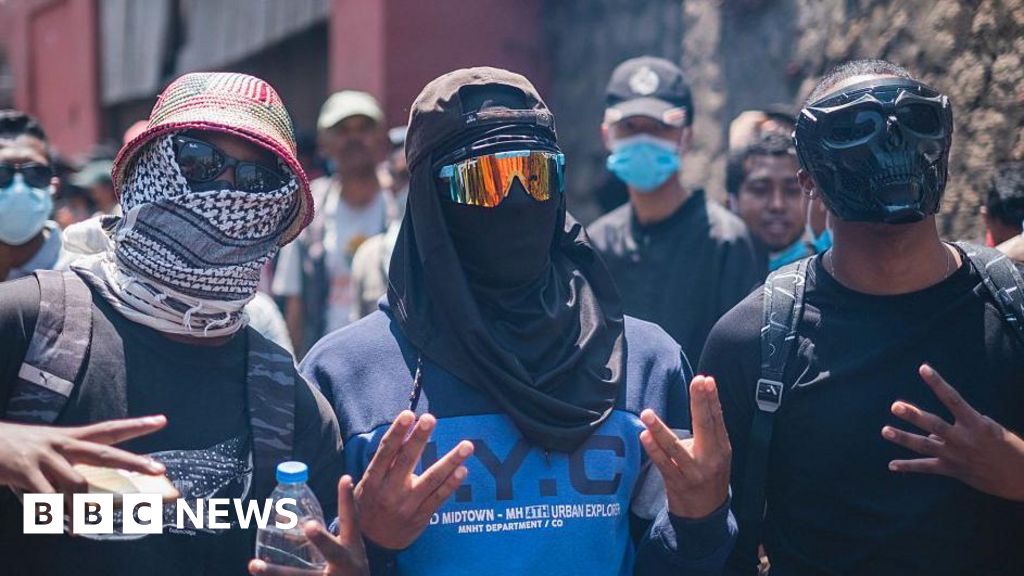
Thousands of Malagasy citizens have taken to the streets in a wave of protests that have swept across Madagascar over the past week. This unprecedented movement, led by the country’s Gen Z, has resulted in President Andry Rajoelina dismissing his government, marking one of the most significant political upheavals in the nation in over 15 years.
The protests, initially sparked by shortages of essential goods, have transformed into a broader challenge against President Rajoelina, who has been in power since 2018. Despite the government’s dismissal, public unrest continues unabated. According to the United Nations, the demonstrations have resulted in at least 22 fatalities and over 100 injuries, figures that the Malagasy government disputes, labeling them as “rumours and misinformation.”
Roots of the Unrest
The protests began gaining momentum following the arrest of two prominent politicians on September 19. These politicians had organized a peaceful demonstration in the capital, Antananarivo, to protest against chronic power and water shortages managed by the state-owned utility company Jirama. The arrests were perceived as an attempt to stifle dissent, leading to widespread outrage.
In response, civil society groups and a youth-led online movement, Gen Z Mada, galvanized support, spreading the protests beyond Antananarivo to eight other cities. Demonstrators, waving banners, have accused the government of failing to uphold basic rights and have highlighted corruption within Jirama as a root cause of the electricity crisis.
The Role of Gen Z Mada
Gen Z Mada has been at the forefront of organizing these protests, utilizing social media platforms like Facebook and TikTok to coordinate actions. Following a meeting with civil society groups and local politicians, a committee was established to plan further demonstrations.
Support for the movement has expanded, with several labor unions, including the Malagasy Trade Union Solidarity, joining the cause. Civil society organizations have called for dialogue, urging church-led discussions to prevent the nation from descending into chaos or civil war.
Demands and Government Response
While the protesters have not issued a formal manifesto, their demands have evolved from addressing public service issues to calling for political change. Many young protesters, frustrated by insecure and poorly paid jobs, are demanding President Rajoelina’s resignation, holding him accountable for their grievances.
“Rajoelina out,” read banners waved by demonstrators in the capital.
Gen Z Mada has articulated demands for the president’s resignation, accountability for the deaths caused by security forces, and a “cleaning up” of the National Assembly. Some protesters have also called for the dissolution of the election commission and the country’s top court.
In response, the government has maintained a heavy security presence in major cities, employing tear gas and water cannons to disperse crowds. A dusk-to-dawn curfew has been imposed in Antananarivo following incidents of violence and looting, including the burning of the finance ministry’s offices.
President Rajoelina, in dismissing his government, accused some ministers of incompetence and promised World Bank support to tackle power outages. He has also pledged support for businesses affected by looting and called for dialogue with the youth. However, these measures have not quelled public anger, exacerbated by the crackdown on protesters.
Madagascar’s Socioeconomic Context
Madagascar remains one of the world’s poorest countries, with 75% of its population living below the poverty line, according to the World Bank. Only about one-third of its 30 million residents have access to electricity, highlighting the depth of infrastructure challenges.
“Living conditions of the Malagasy people are deteriorating and getting worse every day,” a protester told AFP.
Schools in the capital and surrounding districts have been closed due to fears of escalating violence. Authorities assert that unauthorized gatherings pose a risk to public order.
Future Implications
Political analyst and human rights activist Ketakandriana Rafitoson warns that the protests could escalate if the government continues to rely on force rather than addressing accountability. She cautions that the situation could lead to political fragmentation and economic repercussions.
Despite the unrest, analysts suggest that President Rajoelina may maintain power due to his control over state media and key institutions. However, a critical factor will be whether the military continues to support the government’s crackdown on protests.
“We do not want a coup d’etat, because a coup d’etat destroys a nation,” presidential spokesperson Lova Ranoromaro stated on social media.
Madagascar has experienced multiple uprisings since its independence in 1960, including mass protests in 2009 that led to the ousting of former President Marc Ravalomanana and Rajoelina’s initial rise to power. Rajoelina’s recent re-election in 2023 was marked by controversy and opposition boycotts.
The unfolding situation in Madagascar remains fluid, with the potential for significant political and social change as the nation grapples with these unprecedented protests.







